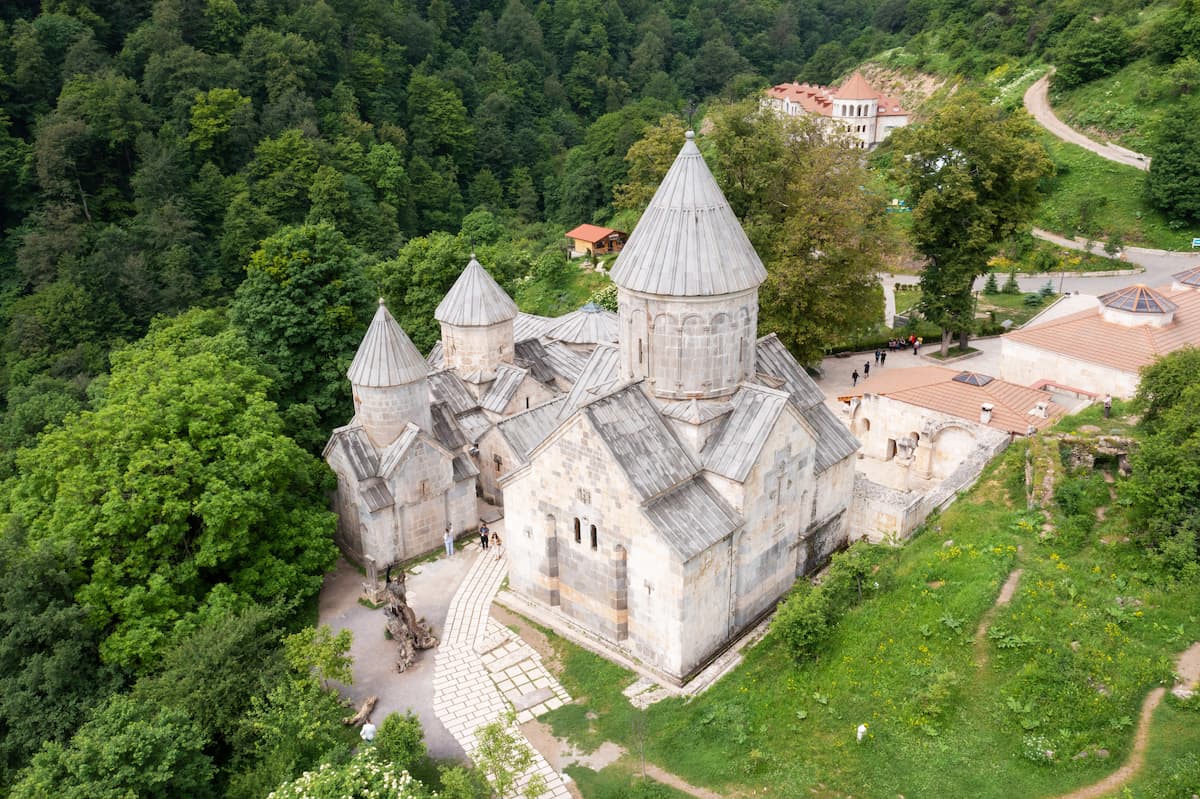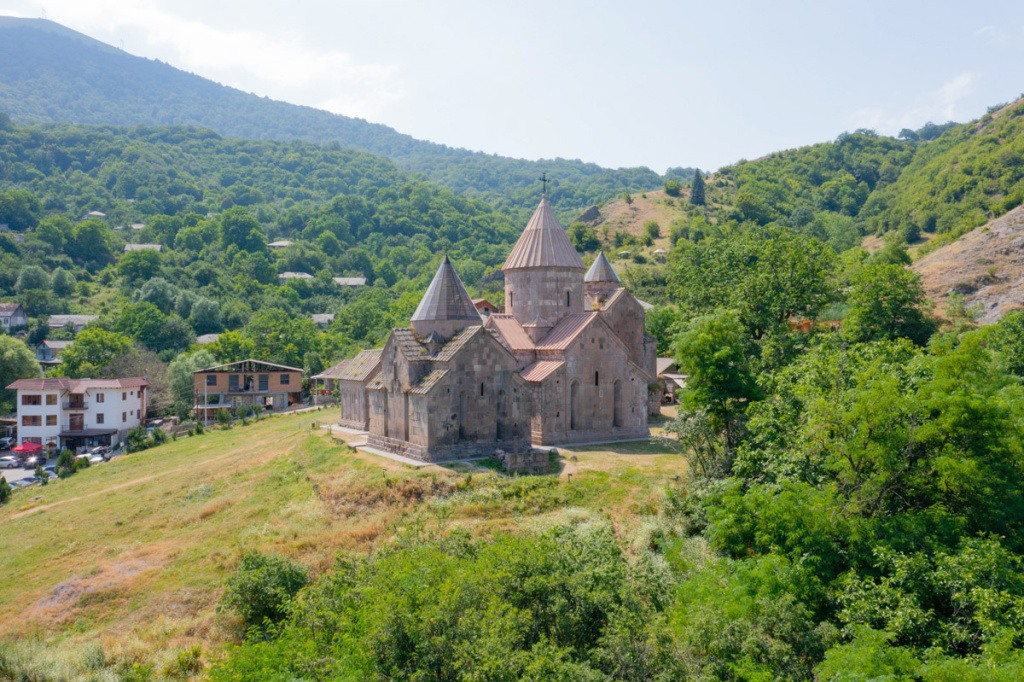Tavush region: description, history, top locations
The Tavush region, where Dilijan is located, is situated in the north-eastern part of Armenia and is considered one of the most picturesque areas. Most of Armenia's forests are concentrated in this region, and we can say that they are the "lungs" of the country. Notably, the greenest area of Armenia is around Dilijan, further confirming the importance of Dilijan as a part of the ecosystem of Tavush and Armenia. The history of this region is rich and fascinating, with its own unique version of Armenian cuisine and dialect, making it an interesting destination for travelers. The combination of natural beauty and the warmth and hospitality of its people will not leave visitors unmoved.
Area: 2704 m2 Population: 130 thousand people Center: Ijevan Cities: Dilijan, Noyemberyan, Ayrum, Berd Climate: mild, humid
The history of Tavush
The history of Tavush The Tavush region has been part of various Armenian kingdoms throughout history, and at different times it has been conquered by Persians, Byzantine, Arabs, and Turks. Medieval monuments found in this area date mainly from the reigns of the Bagratid Dynasty (9th-11th centuries) and Zakarian princes (12th-14th centuries). Armenian rulers were active in education, science, and art development, which can be seen in architectural ensembles throughout the region, even in remote and inaccessible locations. Dilijan and its surrounding areas hold a significant place in this [context].
The top 5 man-made monuments

The top 5 man-made monuments in the Tavush region include not only ancient Christian monasteries, but also fortresses, tombs, medieval bridges over rivers, and secret caves. Each of these sites contains amazing artifacts such as khachkars (cross-slab monuments), tombstones, inscriptions, and rock paintings. The most notable landmarks are the Dilijan beauty of Goshavank and Haghartsin, as well as the Akhchkaberd fortress. Outside the Dilijan community, visitors should also visit the Tavush Fortress and Makaravank Monastery.

In our previous articles on the sights of Dilijan, we discussed the monastic complexes of Goshavank and Haghartsin. These are some of the most significant historical and religious landmarks in Dilijan and the Tavush Region of Armenia. They represent stone testaments to the early medieval period and provide insight into the level of civilisation and development of Christianity in the Caucasus and Middle East at that time.
Tavush Fortress
It is believed that the Tavush region derived its name from the Tavush Fortress, which is one of the oldest architectural monuments in the region and dates back to the 9th century. The fortress is located on the bank of the Tavush River, on the outskirts of the town of Berd. It belonged to King Ashot the Iron from the Bagratuni dynasty and served as a significant defensive structure for centuries. The fortress consists of household and residential buildings, as well as a church, and despite its dilapidated appearance, it continues to attract the interest of both tourists and archaeologists. During recent excavations in 2021, medieval khachkars and household items were found within the citadel of the Tavush Fortress.
Maiden Fortress (Akhchkaberd)
The medieval fortress "Akhchkaberd", also known as the Maiden Fortress, is located near the village of Ovk, in the Dilijan municipality, atop a wooded hill. The historical and archaeological significance of this fortress is significant, as it has been largely preserved in its original state. A fascinating legend is associated with Akhchkaberd, which was considered one of the most impenetrable fortresses during the period of Arabic rule in Armenia in the first half of the 10th century. It was constructed from black stone, leading to its nickname "Kara-Kala", or "Black Fortress". Within the fortress, remnants of destroyed dwellings, water reservoirs, a church, and even a bath house have been preserved.
Makaravank Monastery
The village of Achajur is located approximately one hour's drive away from Dilijan and consists of a complex that includes the main temple, two additional churches, and a chapel. The main temple is notable for its impressive bas-reliefs and sculptures, which are crafted from dark pink andesite and red tuff and rival the beauty of more well-known temples such as Akhtamar in Van, Western Armenia, and Zvartnots, both of which are listed as UNESCO World Heritage Sites.
Natural locations
The Tavush region is a true paradise for those who love mountains and forests. It has several specially protected natural areas, including the Dilijan National Park, the arboretum in Ijevan, and the Berda. Additionally, there are numerous nature reserves in the area.
The region boasts a well-developed network of mountain rivers. Eight of the largest rivers in the region are Astgev, Debed, Voskepar, Varagajur, Tavush, Khndzorut, Kirants, and Khachakhbyur. Only two large lakes are located within the region, and they are both situated within the Dilijan National Park: Parz and Gosh.
Lakes Parz and Gosh
Lakes Parz and Gosh are surrounded by lush vegetation and offer picturesque views. The amenities at Lake Parz are more developed, with a variety of leisure options available, including catamaran rentals, a zipline, and a ropes course. There is also a café where visitors can relax with family and friends. It should be noted that the walking experience around Lake Parz has become even more convenient, as a new circular path for people with mobility impairments has recently been added near the lake.
The Lastiver Gorge
The Lastiver Gorge offers a unique experience for nature enthusiasts. One of the most interesting and unique places is Lastiver. Here, ancient rock carvings and bas-reliefs have been preserved on the caves' rocks. At the bottom of the gorge, there is a small waterfall with stunning beauty. Lastiver is located in the Khachakhpyur River gorge. To get there, one must walk along a mountainous path deep into the forest. Along the way, visitors will encounter beautiful landscapes and horseback riding opportunities. Throughout history, the inaccessibility of these caves served as a refuge for hermits and local residents from invaders, with even a cave where a bonfire could be lit. In Lastiver, there are also numerous wooden huts and treehouses where visitors can spend the night.
Dilijan Nature Reserve
Dilijan Nature Reserve, also known as Dilijan National Park, is one of four national parks in Armenia and the only one located in the Tavush region. It is a significant asset of the country due to its rich biodiversity, including unique plant and animal species, some of which are listed in the Red Data Book. The park offers hiking trails that allow visitors to explore the pristine natural surroundings and take in panoramic views of the Dimats and Airikar Mountains. The reserve's natural beauty makes it an ideal destination for outdoor enthusiasts and nature lovers.
Ijevan Arboretum
Additionally, the Ijevan Arboretum is worth visiting. Located in the southern part of Ijevan, it boasts a diverse collection of over 640 plant species. The arboretum features the only bear hazel avenue in the world and is the only place in Armenia with signs indicating plant names. Visitors can stroll along the pathways and enjoy a picnic by the small lake within the arboretum's grounds.
The Tavush region continues to draw attention due to its rich cultural heritage, scenic landscapes, and potential for tourism development. Each year, the infrastructure in the region improves, and new opportunities and tours are created to suit every taste, ranging from city tours to hiking and extreme climbing.
Any other questions?
Our specialists will contact you as soon as possible




